How to Clean Ceramic Bearings?
Curious about maintaining ceramic bearings? Questions like “What makes ceramic bearings better?”, "What can I use to clean ceramic bearings?" or "What's the best way to clean bearings?" and "Are ceramic bearings self-lubricating?" are common. Dive into our guide on “How to Clean Ceramic Bearings” for all the answers and expert tips on keeping your bearings in top shape.
Understanding Ceramic Bearings
Ceramic bearings represent a significant advancement in bearing technology, offering superior performance under conditions where traditional steel bearings might falter. They come in two main types: Full Ceramic Bearings and Hybrid Ceramic Bearings. Each type serves distinct purposes across various industries, from aerospace to sports equipment, due to their unique properties and benefits.
Full Ceramic Bearings
Full Ceramic Bearings are constructed entirely from ceramic material, both the balls and the races. This construction makes them exceptionally resistant to bearing wear and corrosion, capable of operating in environments that are hostile to steel bearings. The most commonly used ceramics in these bearings are silicon nitride (Si3N4) and zirconium dioxide (ZrO2), each offering specific advantages such as reduced density, high hardness, and minimal thermal expansion.
Please click here to know more about Si3N4 ceramic bearings!
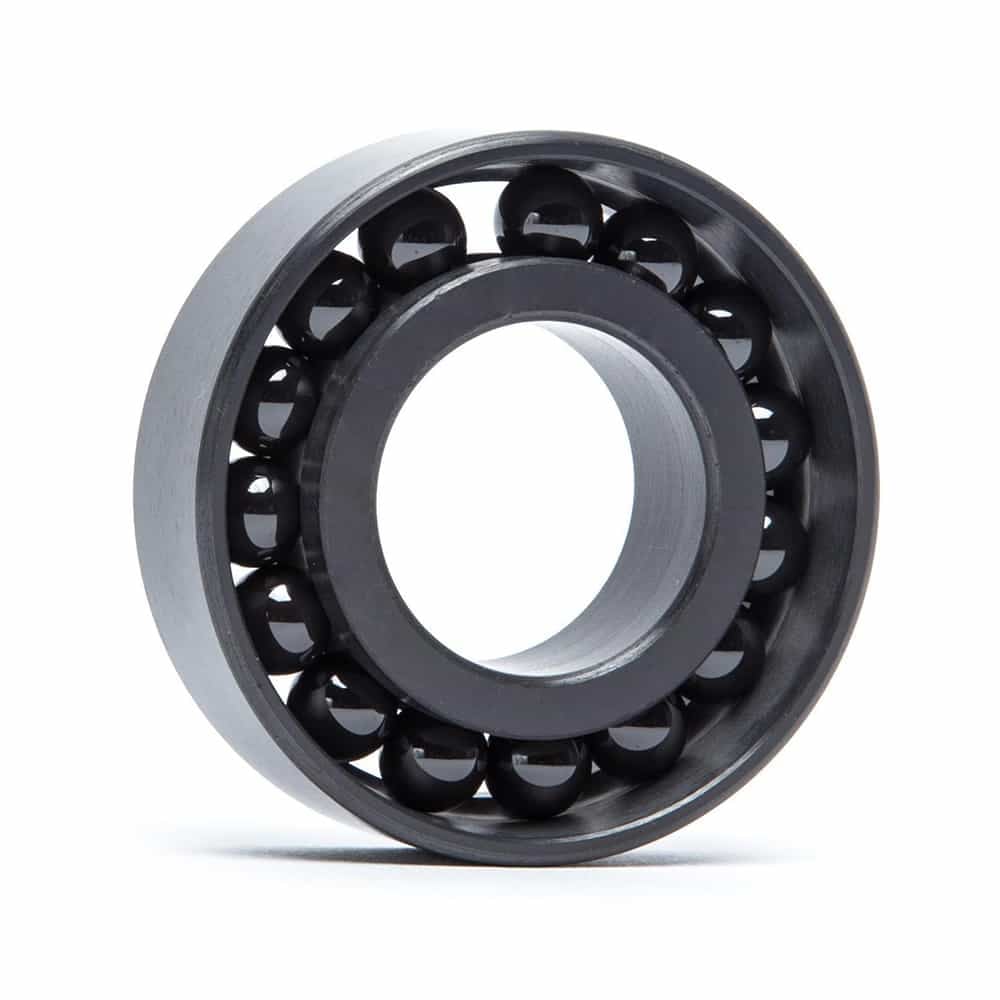
Advantages
- Corrosion Resistance: Immune to most acidic and alkaline environments.
- Temperature Tolerance: Can operate at higher temperatures than steel bearings.
- Non-Magnetic and Electrically Insulating: Ideal for applications sensitive to magnetic fields or electrical insulation.
Applications
Full ceramic bearings are suited for extreme conditions, including high-speed operations in corrosive environments, vacuum applications, and high-temperature scenarios.
Hybrid Ceramic Bearings
Hybrid Ceramic Bearings combine steel races with ceramic balls which are mostly silicon nitride balls. This design harnesses the low weight and high hardness of ceramic balls to reduce friction and wear, while steel races provide robustness and load-bearing capacity. Hybrid bearings are typically used in applications that demand high speeds, high precision, and increased durability without the full cost of complete ceramic solutions.
Please click here to learn the guide to Si3N4 balls!
Advantages
- Reduced Friction: Ceramic balls offer lower friction than steel balls, enhancing speed and efficiency.
- Durability: Steel races add structural integrity, allowing the bearing to support heavier loads.
- Cost-Effective: Less expensive than full ceramic bearings while still offering performance improvements over all-steel bearings.
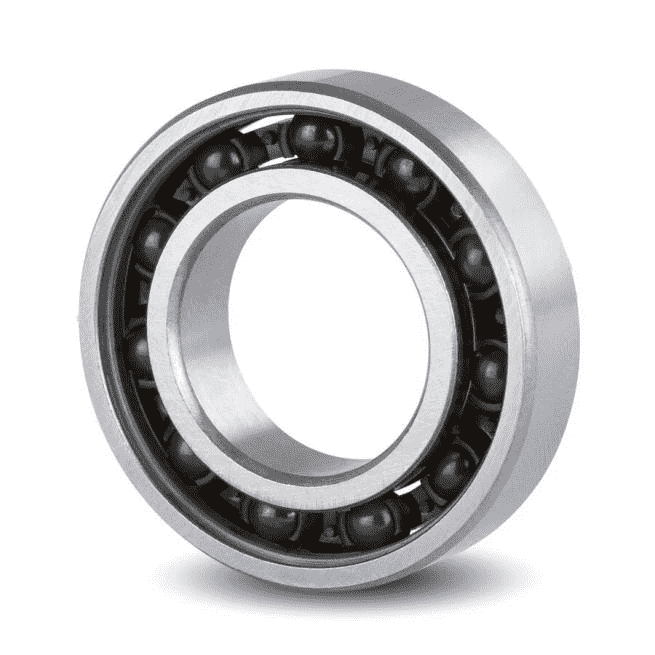
Applications
Ideal for high-speed machinery, precision instruments, and applications where a balance between performance and cost is necessary.
Full Ceramic VS Hybrid Bearings
|
Feature |
Full Ceramic Bearings |
Hybrid Ceramic Bearings |
|
Material |
Ceramic balls and races |
Ceramic balls, steel races |
|
Corrosion Resistance |
Excellent |
Good |
|
Temperature Resistance |
Very High |
High |
|
Magnetic Properties |
Non-magnetic |
Steel races may be magnetic |
|
Electrical Insulation |
Yes |
Steel races conduct electricity |
|
Weight |
Lighter |
Heavier than full ceramic, lighter than steel |
|
Cost |
Higher |
Moderate |
|
Application |
Extreme environments |
High-speed, precision applications with cost considerations |
How to Clean Full Ceramic Bearings
Full ceramic bearings, known for their exceptional durability and resistance to harsh conditions, require minimal maintenance. Nonetheless, periodic cleaning can help preserve their optimal functionality and extend their lifespan. Here’s how to efficiently clean and maintain your full ceramic bearings without causing damage:
Cleaning Essentials
- Protective Gear: Always wear gloves and safety glasses to protect against accidental splashes or debris.
- Cleaning Tools: A soft-bristled brush, such as a toothbrush, and a lint-free cloth are ideal for cleaning without scratching the bearing surfaces.
- Cleaning Solution: While full ceramic bearings can be cleaned with just tap water, for a more thorough clean, consider using a specialized bearing cleaner. Ensure the cleaner is compatible with ceramic materials.
Step-by-Step Cleaning Process
- Disassembly: Carefully remove the ceramic bearings from their application, noting their orientation for proper reassembly.
- Dry Cleaning: Gently brush off any surface dirt or debris using the soft-bristled brush. This preliminary step prevents scratching the bearings during wet cleaning.
- Washing: Rinse the bearings under tap water to remove any remaining contaminants. For a deeper clean, submerge them in a bearing cleaner solution, gently agitating to dislodge any trapped particles.
- Rinsing: After cleaning, rinse the bearings thoroughly under running water to remove any traces of the cleaning solution.
- Drying: Pat the bearings dry with a lint-free cloth, then allow them to air dry completely on a clean surface. It’s crucial that the bearings are entirely dry before reinstallation to prevent any moisture-related issues.
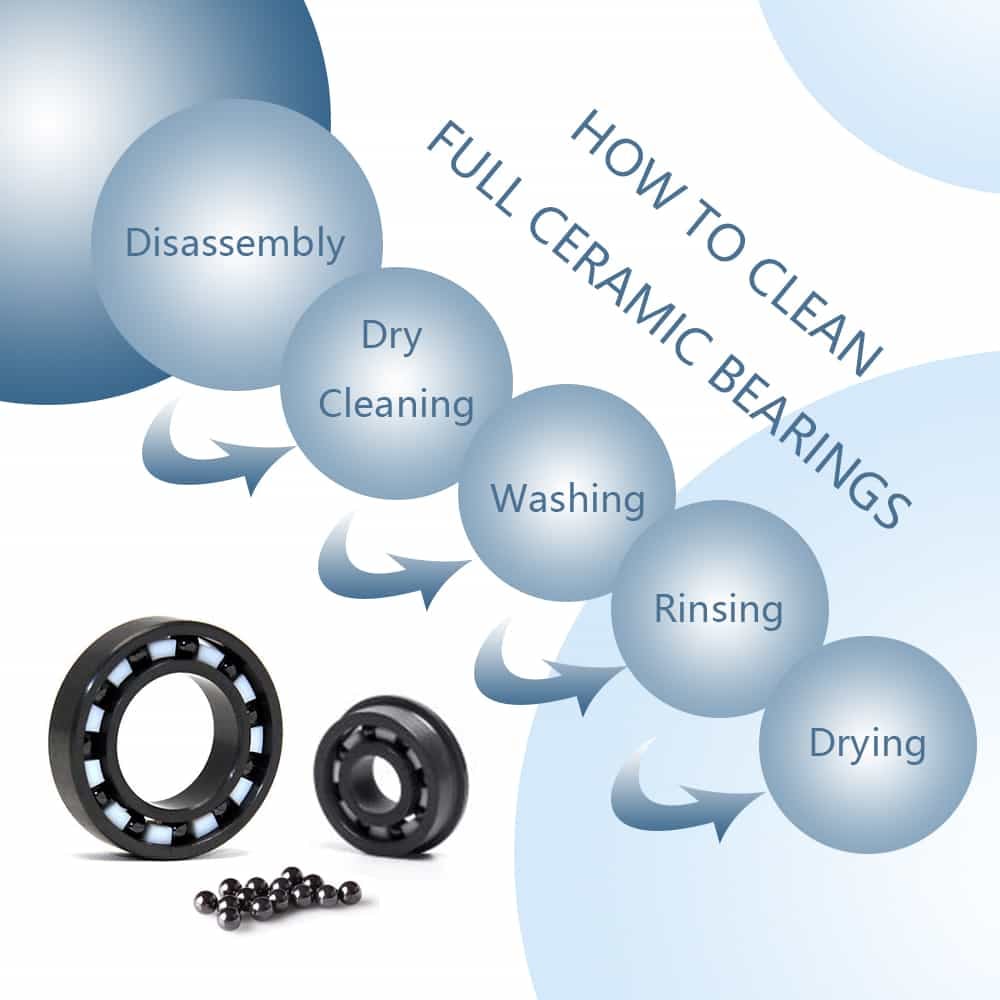
Optional Lubrication
Although full ceramic bearings operate efficiently without lubrication due to their self-lubricating properties, in some instances, applying a light ceramic-compatible lubricant can further reduce friction and protect against wear. If you choose to lubricate, apply a minimal amount, ensuring it is evenly distributed across the bearing.
Reinstallation
Once the bearings are dry (and lubricated if applicable), reinstall them according to the original assembly configuration. Correct installation is vital to avoid undue stress or misalignment that could affect performance.
Maintenance Tips
- Regular Checks: Even though full ceramic bearings are low maintenance, periodic inspections for signs of wear or damage can preempt potential failures.
- Environment Considerations: While these bearings are robust against various environmental factors, avoiding unnecessary exposure to extremely harsh conditions can prolong their service life.
- Handling with Care: Despite their toughness, ceramic materials can be susceptible to shock or impact damage. Handle bearings carefully during cleaning and maintenance.
How to Clean Your Hybrid Ceramic Bearings
Hybrid ceramic bearings, blending ceramic balls with metal rings, strike a balance between durability and performance. Unlike their full ceramic counterparts, these bearings may require lubrication, particularly in high-speed applications. Here's a streamlined approach to cleaning and maintaining your hybrid ceramic bearings for optimal performance.
Preparing for Cleaning
Safety First: Wear protective gloves and eyewear to prevent any injuries.
Tools You Need:
- Bearing cleaner or rubbing alcohol
- A small container
- A toothbrush or similar soft brush
- Clean cloths or paper towels
- A small tool to remove bearing seals (like a needle or tiny screwdriver)
- Bearing lubricant (optional)
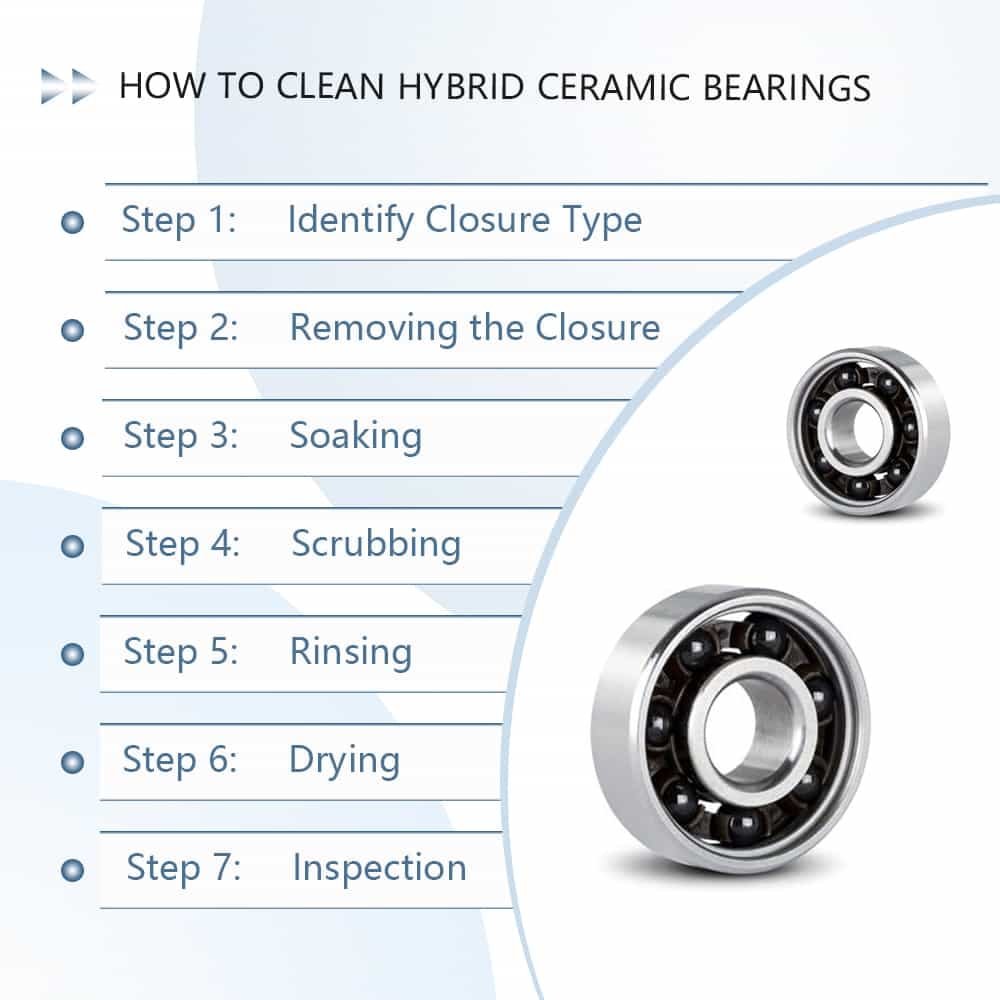
Cleaning Process
Step 1: Identify Closure Type: Hybrid ceramic bearings come with either circlip retained shields or rubber seals. Knowing which one you have determines how you'll access the bearing for cleaning.
Step 2: Removing the Closure:
- For Circlip Shields: Use the needle to gently lift the circlip out of its groove in the outer raceway. Once removed, you can carefully pry the shield away from the inner ring.
- For Rubber Seals: Gently insert the penknife's edge under the seal's inner lip and pry it out. Take care not to insert the tool too deep or with too much force to avoid damaging the bearing's internal structure.
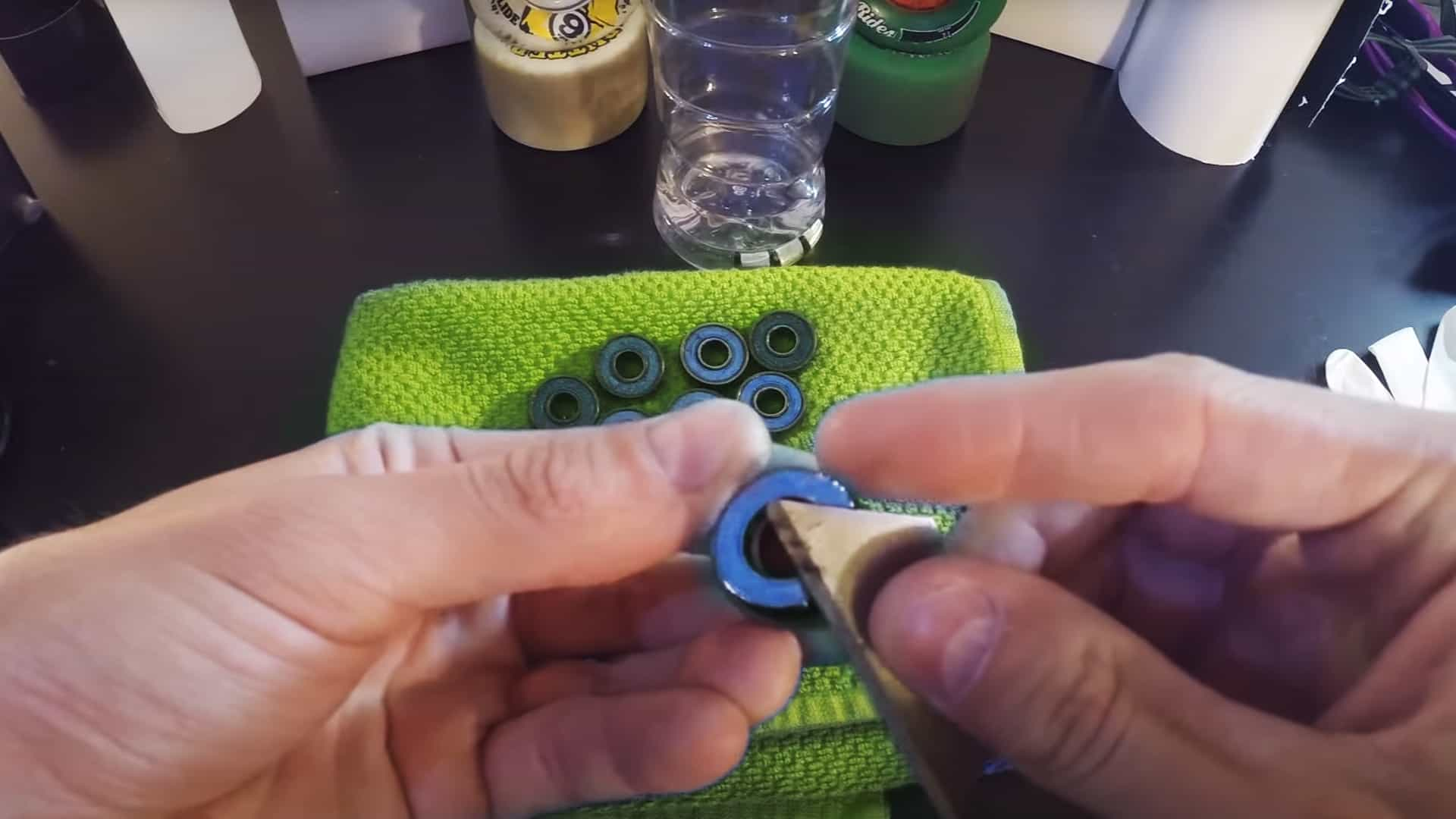
Step 3: Soaking
- Place the bearings and removed shields or seals in a small container filled with isopropyl alcohol or a specific bearing cleaner. This will help dissolve old lubricant and loosen dirt.
- Let them soak for a few minutes. You can gently agitate the container to help dislodge stubborn grime.
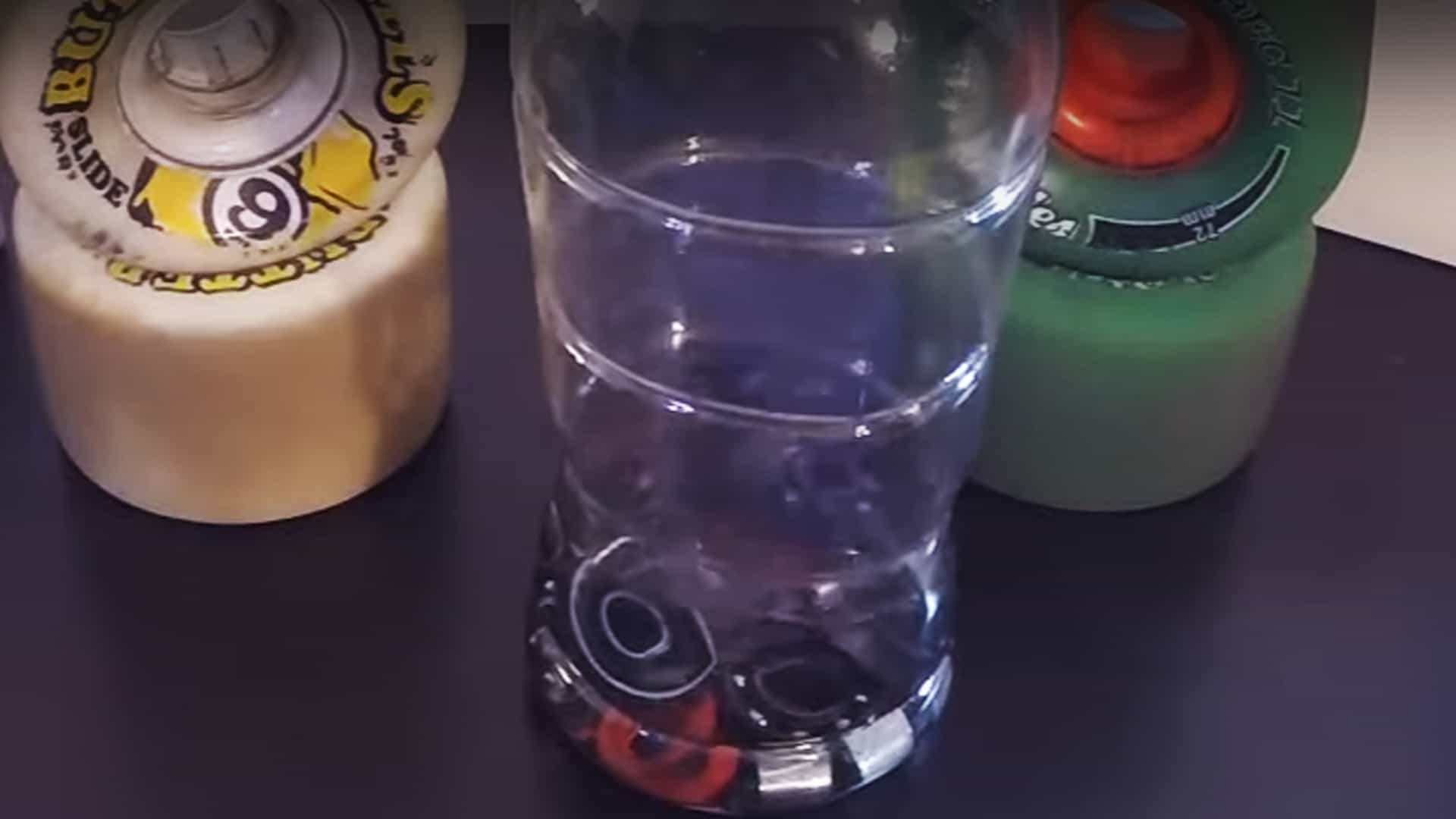
Step 4: Scrubbing
- After soaking, use a soft brush to gently scrub the bearings, paying special attention to the spaces between the balls and the races.
- Clean the shields or seals separately, ensuring all old lubricant and debris are removed.
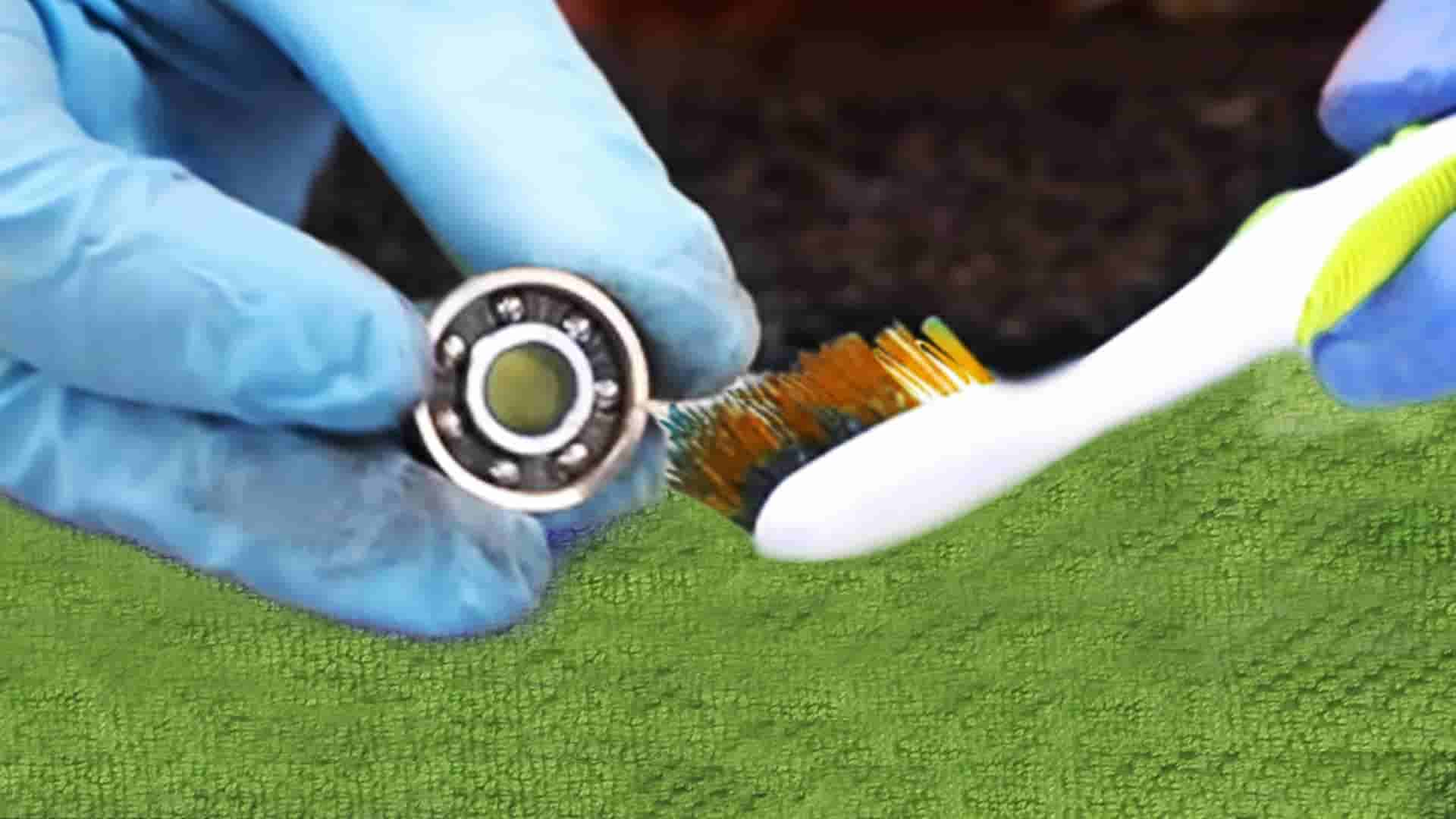
Step 5: Rinsing
- Rinse the bearings and components in clean isopropyl alcohol to remove any remaining cleaner and loosened debris.
- Make sure all parts are thoroughly cleaned before proceeding to the next step.
Step 6: Drying
Dry the bearings and components completely using a clean, lint-free cloth or paper towels. Compressed air can be used to blow out any remaining moisture, especially from hard-to-reach areas within the bearing.
Step 7: Inspection
Inspect the bearings for any signs of wear or damage. Check the smoothness of the raceways and ensure there's no pitting or cracking.
Hybrid Ceramic Bearing Lubrication
Once clean and dry, and if your inspection doesn't reveal any issues, it’s time to relubricate:
- Choosing Your Lubricant: Select a lubricant compatible with hybrid ceramic bearings. Well, what is the best oil or lubricant for ceramic bearings? Avoid heavy greases; instead, opt for a light oil or specialized ceramic bearing lubricant.
- Application: Apply a small amount of lubricant directly to the balls and raceways. Rotate the bearing to distribute the lubricant evenly.
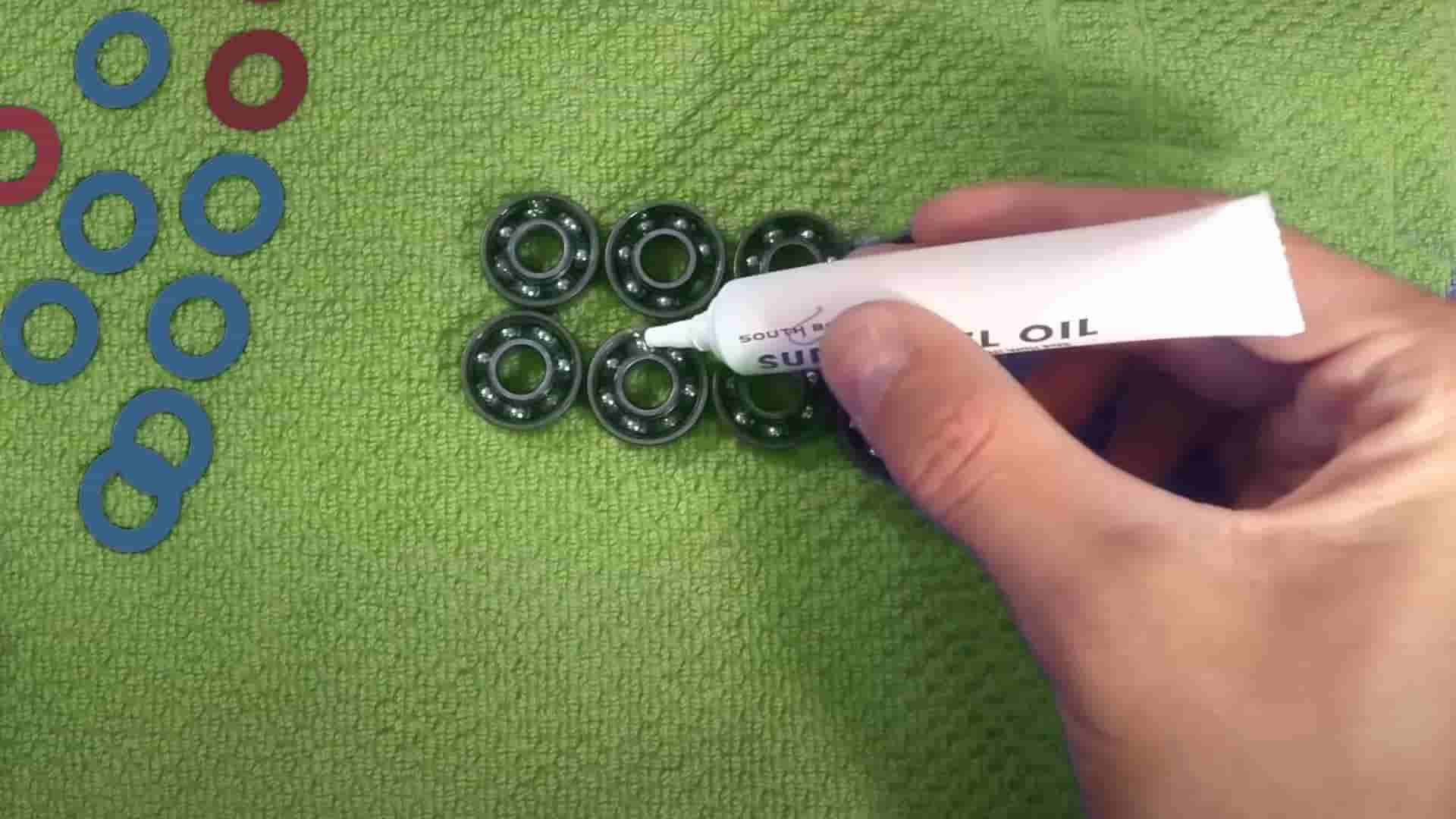
Reassembly
Carefully replace the shields or seals, ensuring they fit snugly without forcing them. If your bearing uses a circlip, gently press it back into its groove in the outer raceway.

Testing
Spin the hybrid ceramic bearings by hand or within their assembly to ensure they move freely without noise or resistance.
Maintenance Tips
- Regular Cleaning: Periodic cleaning depends on usage but aim for at least once every few months or more frequently in high dust or moisture environments.
- Proper Storage: When not in use, store bearings in a clean, dry place to avoid dust accumulation and moisture exposure.
- Routine Checks: Regularly inspect bearings for smooth operation and signs of wear, preemptively addressing any issues.
By following these detailed steps, you can ensure your hybrid ceramic bearings remain in peak condition, offering the performance and longevity expected from such high-quality components.
Seek Expert Help for Your Ceramic Bearings
Picking the right ceramic bearing for tough conditions? Get advice tailored to your needs. While DIY maintenance is popular among cyclists and skateboarders, industrial settings and large-scale operations should consult a professional.
Need more tips on selecting and caring for ceramic bearings? Reach out to a specialist at LILY Bearing. We’re seasoned in providing all sorts of ceramic bearings for challenging industries. Talk to our experts today.
Conclusion
Knowing how to clean bearings, whether full ceramic or hybrid, is key to their durability and peak function. Regular upkeep and correct cleaning methods will prolong your ceramic bearings' life, ensuring smooth operation. Follow this blog's advice to keep your bearings in prime shape, saving you both time and money.
Keep Learning








